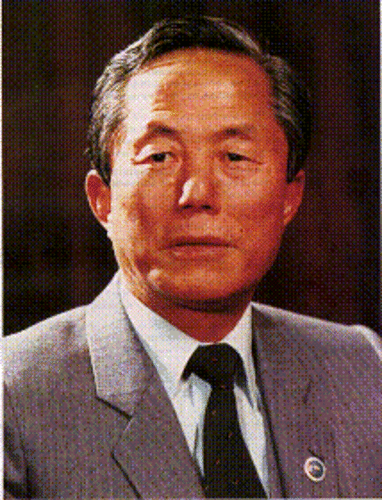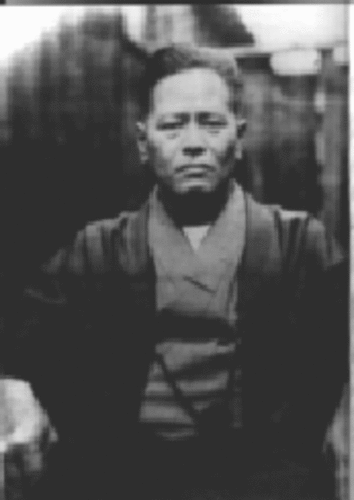Custom 3
Tae Kwon Do
The earliest records of Martial Arts practice in Korea date back to about 50 B.C. These earliest forms of Korean martial arts are know as “Tae Kyon”. Evidence that Martial Arts were being practiced at that time can be found in tombs where wall paintings show two men in fighting-stance. Others reject this evidence and say that these men could be simply dancing.
Back then, time there were three kingdoms:
- Koguryo (37 B.C.- 668 A.D.)
- Paekje (18 B. C. - 600 A. D.)
- Silla (57 B.C. - 935 A.D.)
Silla unified the kingdoms after winning the war against Paekje in 660 A.D. and Koguryo in 668 A.D. The Hwa Rand Do played an important role at this unification. The Hwa Rand Do was an elite group of young noble men, devoted to cultivating mind and body and serves the kingdom Silla. The best translation for HwaRang would probably be “flowering youth” (Hwa=”flower”, Rang= “young man”). The HwaRandg Do had an honor-code and practiced various forms of martial arts, including Taekyon and Soo Bakh Do. The old honor-code of the HwaRand is the philosophical background of modern TaeKwondo.
What followed was a time of peace and the HwaRange turned from a military organization to a group specialized in poetry and music. It was in 936 A.D. when Wang Kon founded the Koryo dynasty, an abbreviation of Koguryo. The name Korea is derived from Koryo.
During the Koryo Dynasty the sport Soo Bakh Do, which was then used as a military training method, became popular. During the Joseon-dynasty (also known as the Yi-dynasty, 1392 A. D. - 1910 A.D.) this emphasis on military training disappeared. King Taejo, founder of the Joseon-dynasty, replaced Buddhism by Confucianism as the state religion. According to Confucianism, the higher class should study the poets, read poems and play music. Martial art was something for the common or even inferior, man.
Modern-day Taekowondo is influenced by many other Martial Arts. The most important of these arts is Japanese Karate. This is because Japan dominated Korea during 1910 until the end of World War II. During WWII, lots of Korean soldiers were trained in Japan. During this occupation of Korea, the Japanese tried to erase all traces of the Korean culture, including the martial arts. The influence that Japan has given to Taekwondo are the quick, line air movements, the characterize the various Japanese system.
After WWII, when Korea became independent, several kwans arose. The kwans were:
- Chung Do Kwan
- Moo Duk Kwan
- Yun Moo Kwan
- Chang Moo Kwan
- Oh Do Kwan
- Ji Do Kwan
- Chi Do Kwan
- Song Moo Kwan
The Kwans united in 1955 as Tae Soo Do. In the beginning of 1957, the name Taekwondo was adopted by several Korean martial arts masters, for it similarity to the name Tae Kyon.
General Choi Hong-Hi required the army to train Taekwondo, so the very first Taekwondo students were Korean soldiers. The police and air force had to learn Taekwondo as well. At the time, Taekwondo was merely a Korean version of Shotokan Karate. In 1961 the Korean Taekwondo Union arose from the Soo Bakh Do Association acknowledged the Korean Taekwondo Union and in 1965 the name was changed to Korean Taekwondo Association (K.T. A). General Choi was president of the K.T. A. at that time and was asked to strart the I.T.F as the international branch of the K. T.A. The southern government was overthrown in 1961. General Choi left for America and established I.T.F (International Taekwondo Federation) Taekwondo, as a separate enity, two years later.
Demonstrations were given all over the world. It took a while before real progress was made, but eventually, in 1973, the World Taekwondo Federation (W.T.F) was founded. In 1980, W.T.F. Taekwondo was recognized by the International Olympic Committee (I.O.C.) and became a demonstration sport at the Olympics in 1988. In the year 2000 teakwood made its debute as an official Olympic sport. There were several attemps to unify I.T.F and W.T.F. Taekwondo, but unfortunately, these failed.
K.T.A.
In the year 2000 taekwondo made its debute as an official Olympic sport, Taken from a post in the
Dojang-digest
The Korea Taekwondo Association (KTA) is the National Governing Body (NGB) for Taekwondo in the Republic of Korea (ROK), just like the United States Taekwondo Union (USTU) is the National Governing Body for Taekwondo in the United States of America. The World Taekwondo Federation (WTF) which was formed in 1973, is made up of Taekwondo NGBs. These NGBs are members of the WTF, and not individuals. Individuals may be affiliated to the WTF through their NGB, but individual cannot join the WTF directly.
Dr. Un Yong Kim became the 5th President of the KTA in 1971. Dr. Kim subsequently became the 1st and only President of the WTF in 1973 and around 1990 he gave up the post of KTA President.
Mr. Choi, Sae-Chang became the 6th KTA President after Dr. Kim stepped down due to his expanded responsibilities in the International Sports community. Mr. Choi was a former four star general in the ROK Army and also held the post of Defense Minister. Mr. Choi was replaced by Mr. Rhee, Pil Gon in 1996.
The KTA is alive and well and probably is the largers, most active NGB for Taekwondo in the world. For more information, you can write to the KTA at the following address:
The Korea Taekwondo Association
#607, Olympic Center
88 Oryoon-dong, Songpa-ku
Seoul, Korea
Telephone: 420-4271
Fax: 420-4274
I.T.F. vs W.T. F.
As mentioned earlier, General Choi established ITF-Taekwondo (which practices a more traditional form of taekwondo) while WTF-Taekwondo (which has a strong emphasis on sparring) became an Olympic sport in 2000.
A good-will trip to North-Korea in 1966 caused Gerneral Choi to fall in disgrace in the eyes of the South-Korean. Choi resigned as president of the K.T.A. and founded the I.T.F. on March the 22nd of that same year. The headquarters of ITF were established in Canada.
ITF started concentrating on the forms developed by General Choi, while the KTA (which later, on May 28, 1973, became the WTF) concentrated on the Palgwe’s. Later the WTF abandoned the Palgwe’s and stared concentrating on Taeguks. Slowly, the WTF emphasis turned to sparring. This is also the reason why a lot of people rather call (WTF) Taekwnond a martial sport than a Martial Art.
The American Taekwondo Association (ATA) is a smaller organization, and has many similarities to the ITF. The ATA has a copyright on the forms of the organization, so these forms cannot be used on competitions by non-members. There are many organizations, but the three mentioned above have the most members.
ITF practices the so-called “semi-contact” part of Taekwondo, while WTF practices the so-called “full-contact” part. ITF focuses more on the traditional way of taekwondo. Since the break-up, ther have been many attempts to reunite WTF and ITF, so-far without success. There probably will never be a union within Taekwondo.

Karate
Grandmaster Chojun Miyagi was born on April 25th, 1888. He began training in karate under Kanryo Higaonna at the age of 14, in 1902. Like his teacher before him, because of his great natural talent and fierce determination, he progressed very rapidly. The training was severe beyond belief at times but he practiced even harder with an enthusiasm unmatched by any of the other students. Chojun Miyagi became “uchi deshi” (private disciple) of Kanryo Higaonna. He studied with his teacher for 14 years before his teacher died in 1915.
Chojun Miyagi, as successor to the Naha-te pushed him to the limits of endurance in his desire to emulate the extraordinary skill of his teacher. To this end, that same year (1915) he journeyed to Fuzhou, China, the city where his teacher had studied the martial arts, to further his research. This was one of three trips he made to China during his lifetime.
On his return to Okinawa he began to teach the martial arts at his home in Naha. Later, he also taught at the Okinawan Perfecture Police Training Center, at the Okinawan Master’s Training College, and at the Naha Commercial High School (Where his teacher once taught).
Chojun Miyagi worked hard to spread karate throughout Okinawa and mainland Japan, and to earn Naha-te a status equal to that of the highly respected Japanese martial arts of Judo and Kendo. To achieve this he traveled frequently to mainland Japan where he was invited to teach karate at Kyoto University and Ritsumei Kan University. In 1933 karate was registered at the Butokukai, the center for all martial arts in Japan. This was a milestone for karate as it meant that it was recognized on a level with the highly respected martial arts of Japan.
Chojun Miyagi dedicated his whole life to karate. He was responsible for structuring Naha-te (which he later named “Goju-Ryu”) into a systemized discipline which could be taught to society in general. This teaching system which he formulated enabled karate to be taught in schools for the benefit of the young, and to reach vast numbers of people throughout the world. However, his private teaching at his home remained strictly in adherence to the principles of his teacher, Kanryo Higaonna, and his teacher before him, Ryu Ryu Ko.
The naming of Goju-Ryu came about more by accident than design. In 1930, Chojun Miyagi’s top student, Jin’an Shinzato, while in Tokyo was asked by numerous martial arts masters as to what school of martial arts he practiced. As Naha-te had no formal name he could not answer this question. On his return to Okinawa he reported this incident to Chojun Miyagi. After much consideration, Chojun Miyagi decided on the name Goju-Ryu (hard and soft school) as a name for his style. This name he took from a line in the Bubishi (a classical Chinese text on martial arts and other subjects). This line, which appears in a poem describing the eight precepts of the martial arts, reads “Ho Goju Donto” (The way of inhaling and exhaling is hardness and softness).
Chojun Miyagi passed away October 8th, 1953 leaving a great legacy behind. He predicted that during the 20th century karate would spread throughout the world. Today we can see that his prediction has been realized; karate is not only practiced in Japan, but it can be found throughout the countries of the world. Karate can no longer be referred to as a solely Okinawan or Japanese martial art, but it has become an art with no boundaries, an art for all nations and all people of the world.
